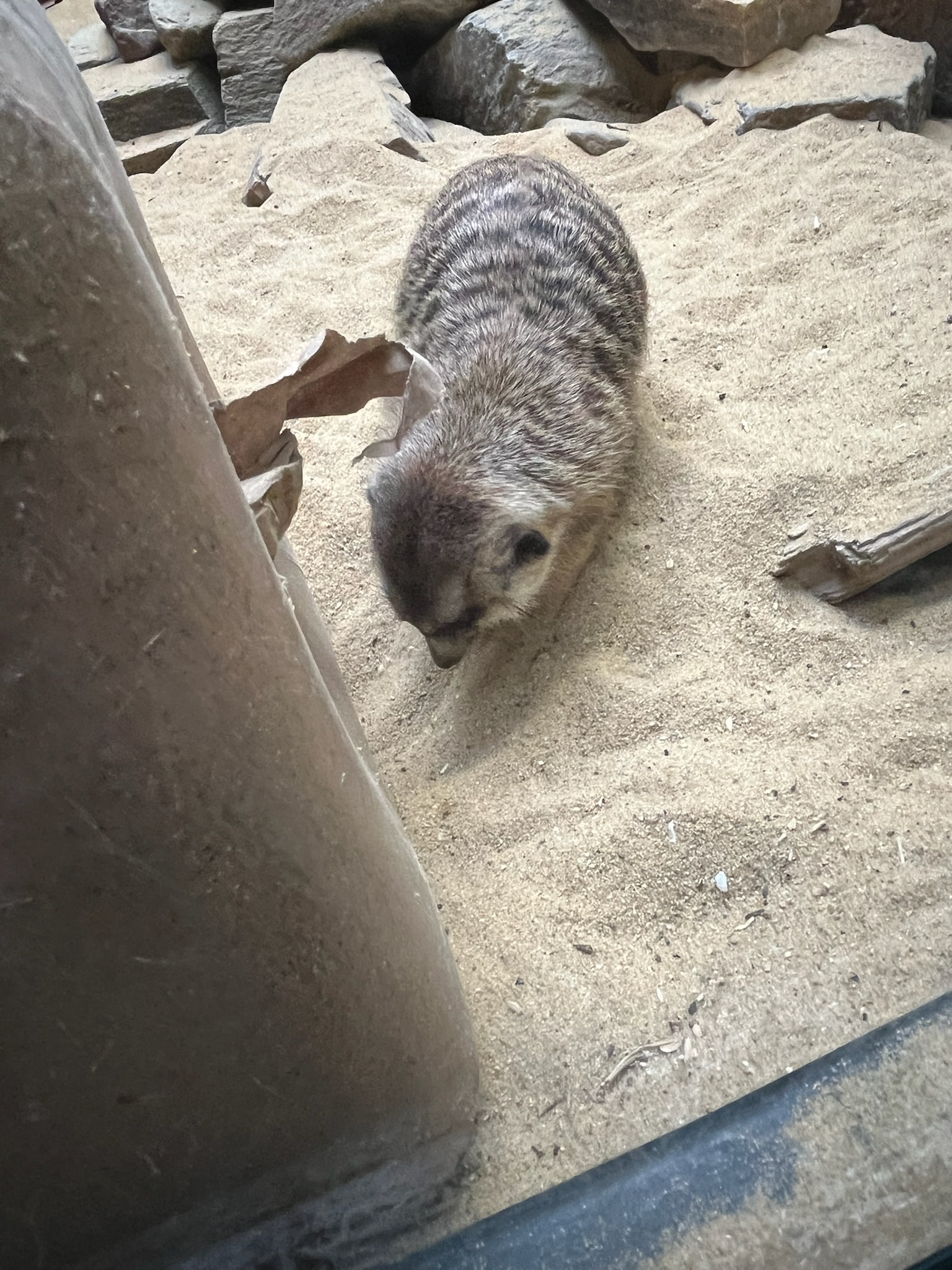Event name: National Zoo field trip
Event time and place: 3001 Connecticut Ave NW, Washington, DC 20008, May 05, 2024
ZOO BUILDINGS
Small mammal house

Image of shrew

Image of Tamarin
shade-grownchocolates as the tamarins are in the trees that provide shade for the cacao plantations. There were not any displays that go beyond simple identifying text on a panel. Overall, the education level for this hall is mostly for older kids and teens because kids kept on trying to tap the glass to get the animals attention which is not appropriate. Most of the older audiences took the time to read the information plaques for themselves and for their younger children, teaching them facts about the animal.

Image of mole rat

Image of meerkat
Amazonia
Arapaima:
They are the last of few ancient fishes. Arapaima have two teeth in their mouth and tongue like the aliens in Aliens.
They also have very small gills so they have a swim bladder that opens into the mouth acting like a lung so it can live almost 24 hours out of water which is why they live so well in the slow, oxygen-deficient Amazon river. They are also very large, being almost 10ft long. They mostly eat other fishes but also insects. There wasn't any interactive display. Overall, the education level for this hall is mostly for kids and teens. Most of the older audiences took the time to read the information plaques for themselves or for their kids.
Scarlet Ibis: They live in warm, humid climates such as South American and Caribbean rainforests. They feed on a carnivorous diet and use their long beaks to probe in the ground and muddy, shallow water for crustaceans. They travel in flocks (congregation) and they also coexist with other bird species. In the dome, they coexisted with the spoonbills. Overall, the education level for this hall is mostly for kids and teens. The birds are far away from the kids so they cannot touch them, but still visible for the kids to see. In the dome, there weren't too many non-SGCers who read the plaques, but that is because the plaques were awkwardly placed on the ground or there weren't any plaques in general.
Electric eel: Electric eels have the potential to deliver shocks for almost 8 hours after their death. They consume mostly fish, crustaceans, and even small mammals. Electric eels can also be used to check the water qua;ity in treatment facilities. They do this because the different water chemistry changes the signals the fish sends. They had a screen at the top that showed the voltage amplification over time from the eels showing the voltage levels of the electricity the eels emit. Overall, the education level for this hall is mostly for older kids and teens. There weren't many children in this exhibit. Most of the older audiences took the time to read the information plaques for themselves.

Image of Dendrobates tinctorius
EDUCATION
Two specific ways the zoo aids the public understanding of animals is feeding shows. The feeding shows demonstrate the public on what the animal eats, how it eats, and also gives information about the animals. Another example would be reptile week. May 5-11 was amphibian week so in the reptilian discovery center, there were lots of events that gave public understanding of animals. One of the tables had a wheel with numbers and each number corresponded with a number. If you get the question right, you get a prize (sticker.) I learned that amphibians have a thing called the nictitating membrane which acts as a third eyelid for them. I also learned that Maryland does not have an official state salamander.
ANIMAL MENTAL/EMOTIONAL WELFARE
One example of the physical setting being a more comfortable place for animals is that in the amazonia, there is a dome that has Scarlet Ibis and roseate spoonbill roaming around freely and the dome mimics a tropical forest. There are epiphytes and kapok trees that the birds can fly freely around, that way it feels less like a cage and more comfortable. Another example would be the Brush-Tailed Bettong. They are nocturnal animals, making them more active at night, however the zoo is closed at night and so people would not be able to see them. In order to maintain the bettongs schedule with the average persons, the zoo made that section of the exhibit pitch black and put red lights in the cage. They use red lights so that people can see the Bettong while still maintaining the sleep cycles for the nocturnal animal.


